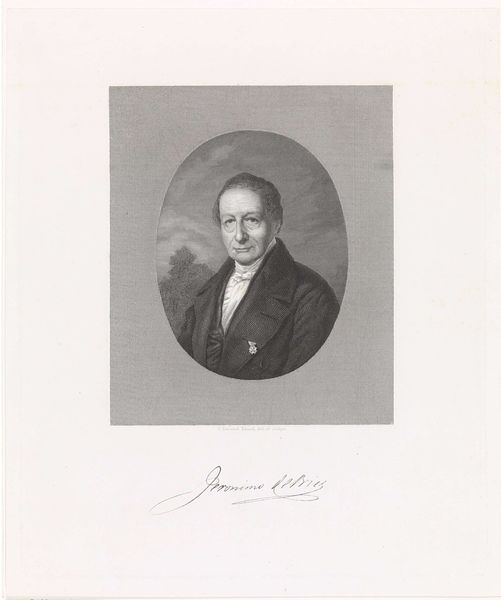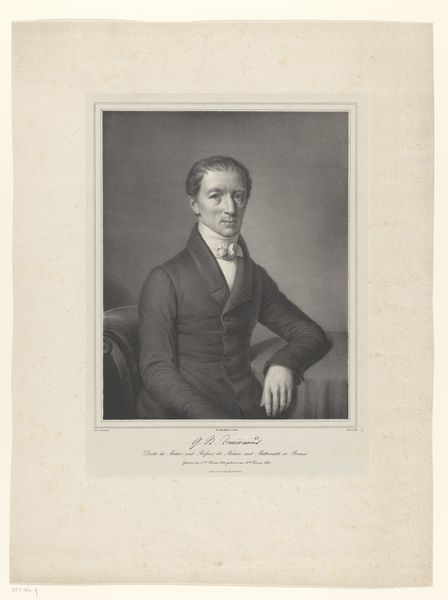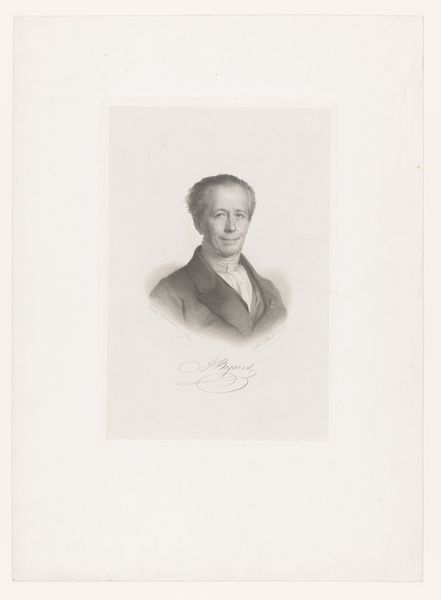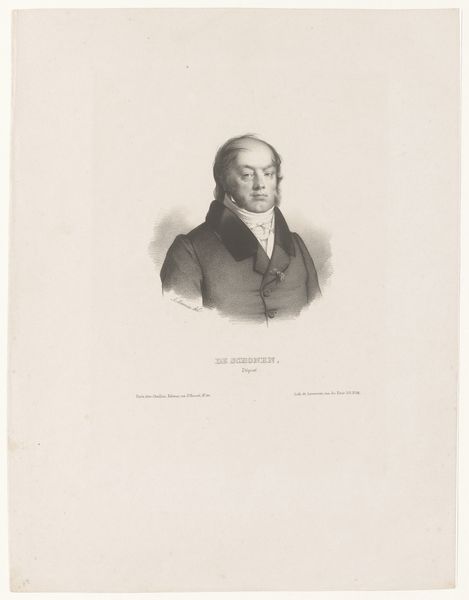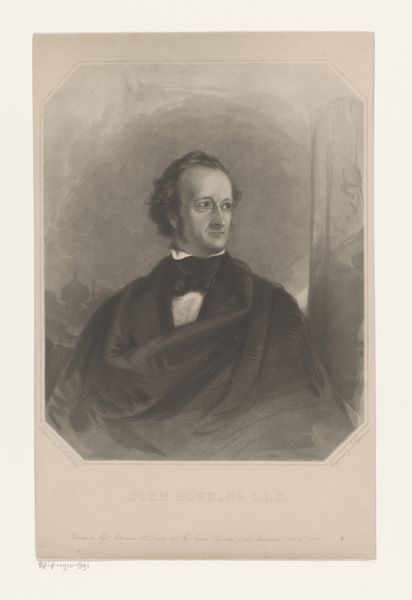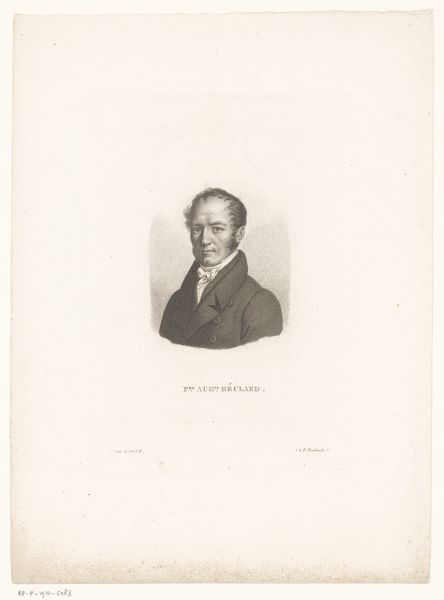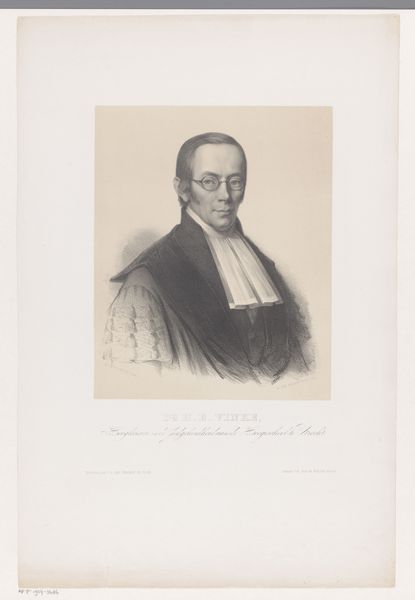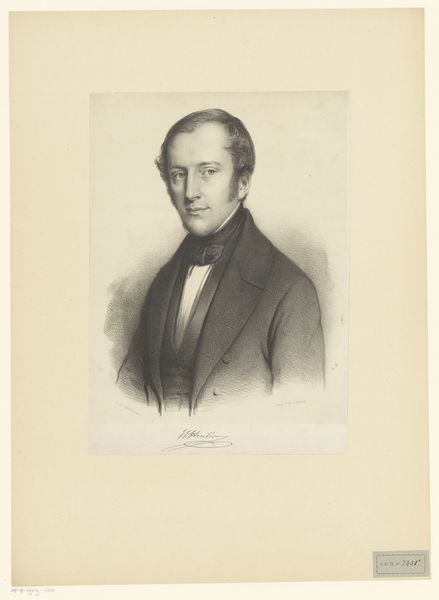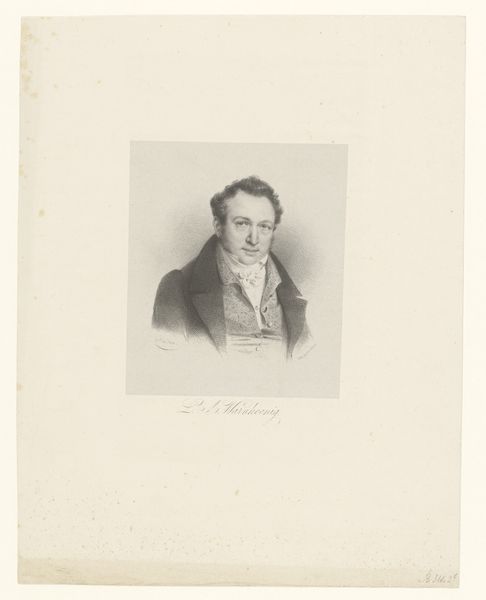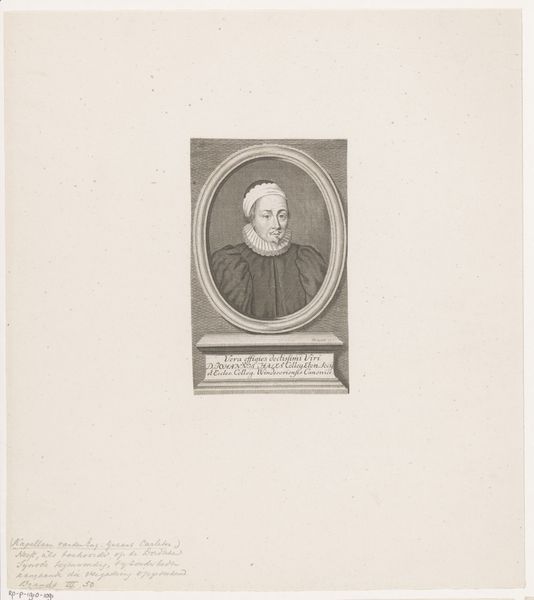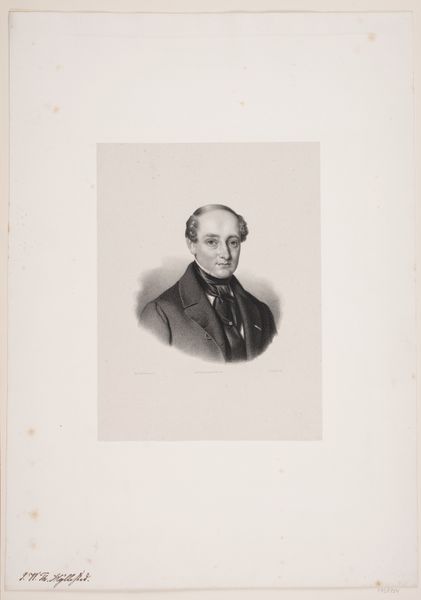
print, engraving
#
portrait
#
pencil drawn
#
16_19th-century
# print
#
old engraving style
#
academic-art
#
engraving
#
realism
Dimensions: height 342 mm, width 257 mm
Copyright: Rijks Museum: Open Domain
Editor: Here we have an engraving from 1852, "Portret van Abraham des Amorie van der Hoeven," by Willem Frederik Wehmeyer. I'm immediately struck by the incredible detail achieved through the engraving process. How does the artist's choice of material impact your understanding of the piece? Curator: Considering the means of production is central here. The laborious process of engraving—the precise cuts into a metal plate—speaks volumes about the values placed on accuracy and reproduction at the time. This wasn't about spontaneous expression, but controlled dissemination of an image. It speaks to the increasing role of printing in shaping public perception and perpetuating certain power structures. What about the sitter’s clothing—what materials are indicated and how do you read those? Editor: I see the velvet of his coat and the lace of his collar. These materials definitely point to a person of high social standing, which relates to the economic power needed for commissioning portraits like this. Curator: Exactly. This image is not just of a man, but of the tangible symbols of his status—literally etched into a reproducible format. How does knowing that this image could be printed multiple times alter your sense of its value? Editor: That’s a good point. If it was only reproducible as a painting it’d feel like something specifically made for him, not a wide dissemination. I'm struck by the artist and sitter deliberately taking part in creating what might be mass-produced. Curator: And that act of deliberate participation is key. The labor involved in both its creation and potential widespread availability challenges any easy separation of "high" art from a potentially commercial enterprise. Do you find that blurs the boundaries a little for you? Editor: Yes, seeing this piece with the Materialist lens really clarifies the societal values and production elements embedded within what might otherwise seem a straightforward portrait. Thanks for helping me unpack that! Curator: It's fascinating to see how close attention to materials and production processes reveals hidden narratives in artworks we often take for granted.
Comments
No comments
Be the first to comment and join the conversation on the ultimate creative platform.

